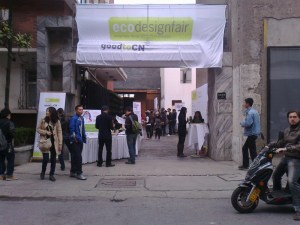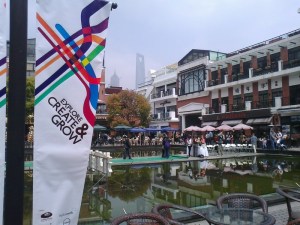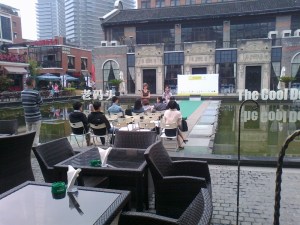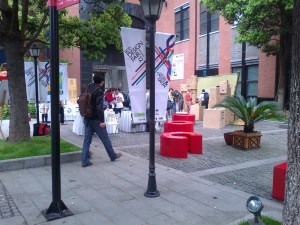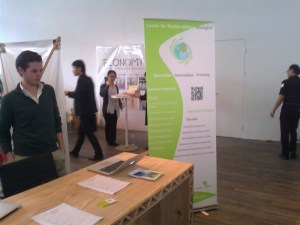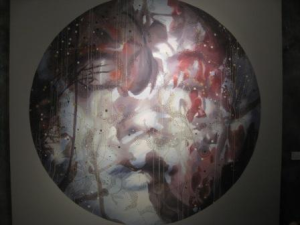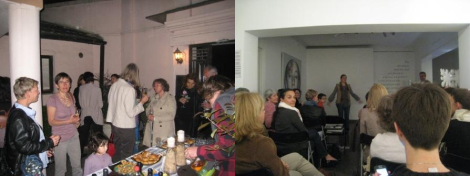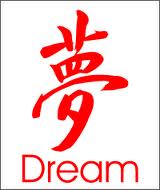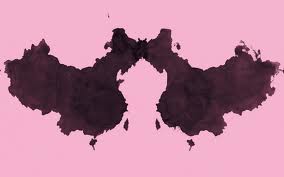Category Archives: expat
May 19, 2012 Eco Design Fair- New To Go
The design fair was held on the 14th of April in the Waterhouse at South Bund. The location was superb and the weather lovely. The fair kicked off at 10 o’clock and when I arrived at noon, the energy was palpable.
The fair consisted out of several areas. We began our tour by checking out the Eco Stage .
where a lecture was being given about responsible products and services.
In the Urban Farming section, a demonstration was being given on the proper seed planting techniques.
Adjacent to the Urban farming section, there was a stage providing information about eco values.
Leaving no stone unturned, the Eco Design Fair even had a children’s section, replete with an uber-fun Eco Kid’s Castle and an eco playground built from (recycled) paper boxes.
At the Eco Marketplace, there were many different entrepreneurs/expats demonstrating and promoting their environmentally-friendly products. The were also a number of educational initiatives, including a booth promoting short-termsix week internships of six weeks and three-week summer courses in Shanghai, all courtesy of the Shanghai Centre for Sustainability.
Another stall offered information on nutrion and health-food products, including their two distribution points in Shanghai.
Another stand promoted fabulous bamboo displays, all of which were built in ecologically-sustainable ways.
The Eco Design Fair was a great event and certainly made for an afternoon well-spent. Basking in the very lovely weather, one could certainly appreciate the our wonderful planet!
Key information:
50/50 Chinese/International
1 day event with a lot of lectures, fashion walk and workshops, a big market
5th time organized (1st time in 2008)
location near the huangpu river
very big superficy for all the event (maybe appr. 10 000sq m)
- Leave a comment
- Posted under bazaar, eco, events, expat, shanghai, small business
May 7, 2012 APM: The Leper Conference
Last Monday, April 16th, we had the pleasure to attend a conference organized by APM a charity organization that does a lot of projects for Chinese people. That day, we could see from our eyes an example of a project they carry on: The lepers in China.
The conference started at 7 o’clock in the evening at 22 Fumin road near to the Jing’an Temple, first there was a cocktail for half an hour, with a snack and a drink, in which the visitors could talk to each other and walk across the gallery and enjoy the art at the location where the lecture was given.
The actual lecture started at 7:30 and the guest speaker got introduced. The guest speaker was a priest who helped people suffering of leper and who lived in a separated leper city. He explained that leper is a symptom that breaks down peoples nerve system, and results in dying body parts which they eventually will lose by amputation or falling off.
The people suffering of leper often get banned and abandoned by there family and friends so that they get really isolated. The sickness could also eliminate their sight and hearing so that they get isolated even more. It is still unknown how this disease is being transmitted, by blood, breath or touch excetera. However it is certain that a dirty and unclean domestic situation is possibly blamed for the transmission of leper.
The lecturer showed several pictures of people suffering of leper, and their living situation in the leper village. In order to get a good sight of the situation; after the lecture there was time to ask questions. For the ones who did not speak French there was a translator during the lecture.
It was a very interesting event and we certainly got more wise about the discussed topic. Great to see that people take care and putting effort in helping other people who are suffering and incapable of helping themselves, due to a lack of financial resources or knowledge.
- Leave a comment
- Posted under charity, conference, events, expat, organization
April 17, 2012 Will the Chinese Dream Replace the American Dream?
The American Dream has long been held up as the model for social mobility, allowing people from disparate backgrounds and varying levels of destitution to reinvent themselves. As first identified by a visiting Alexis de Tocqueville in his 1831 treatise, Democracy in America, the United States, unencumbered by class history or ethnic determinism, offered an unparalleled avenue for newcomers to advance in the world. In the years following de Tocqueville’s pithy analysis, tens of millions made the journey, as immortalized in Emma’s Lazarus’s 1883 sonnet, “The Great Colossus”:
“Give me your tired, your poor, Your huddled masses yearning to breathe free”
Many of these immigrants were able to establish highly-successful enterprises, rising from poverty to opulence in a single generation. Andrew Carnegie, born in a weaver’s cottage in rural Scotland, would become America’s greatest steel magnate and philanthropist. More recently, immigrants such as super-investor George Soros and Google co-founder Sergey Brin were able to achieve tremendous success. With a culture prizing risk-taking and unconventional ideas, the US has given rise to countless creative businesses, making many people wealthy in the process. Class background was no impediment to success; many of the nation’s more successful business people, including both Bill Gates and Warren Buffet, would hail from solidly middle-class backgrounds. Even for those not engaged in entrepreneurial risk-taking, the American Dream guaranteed at least a slice of the American pie: a house with a backyard for barbeques, two cars in the garage, and the periodic family vacation.
Despite the manifold success stories, the American Dream is starting to show some signs of fraying. An OECD study showed social mobility to be lower in the United States than in many European countries, even with the US’s historical absence of class or ethnic legacy. As Charles Murray presents in his controversial new book Coming Apart, America has become heavily divided between its upper and lower income brackets, with sharp divergences not just in income, but in health, lifestyle, religious observance, and divorce rates. In 1931, historian James Truslow Adams defined the American Dream by stating that,”life should be better and richer and fuller for everyone, with opportunity for each according to ability or achievement.” Adams, however, does issue the caveat that, “it is not a dream of motor cars and high wages merely, but a dream of social order.” For many outside the rarified air of the top income brackets, this ideal has begun to slip out of reach
Furthermore, with comparably-slow growth rates and a financial sector still wounded by the crisis of 2008, opportunities for ambitious entrepreneurs are fewer and further between. Although the US has shown impressive signs of rebounding in recent months, crystallized by the Dow hitting a symbolic 13,000 this past week, it is still a mature economy with indebted consumers unable to max out their cards out any further. Housing starts and mortgage intermediation are still sclerotic. Thus, for those with a bit of cash, an appetite for risk, and the ability to dream big, the time has come to look elsewhere.
And where better to look than the Middle Kingdom. With a population of 1.3 billion, rising incomes and education levels, and a government enamored with investment, China offers a cornucopia of opportunities for the aspiring impresario. As the crowded expat pubs of Shanghai and Beijing can clearly attest, many have already taken the plunge, teaching English, studying Chinese language, or coming on assignment from their home countries. Although the percentage of foreigners actually starting their own businesses is relatively small, being in an environment of high growth rates, massive construction projects, and nouveau riche tycoons rolling around in black S-classes is enough to make any displaced foreigner feel like a development guru with his water-cooler buddies back home.
Amongst the many records on the horizon for China in the coming years will be surpassing Japan to become the world’s largest market for luxury goods, expected to happen by 2013. Shopping malls are being built with alacrity and BMW’s are quickly replacing bicycles along the nation’s broad avenues. All of these developments inevitably beg the question of where this wealth is actually coming from. Although research has confirmed that China’s GINI coefficient (wealth inequality) is rising, how does this portend for equal opportunity in getting ahead? Furthermore, with such impressive growth in virtually every sector imaginable, is it possible to rise to success from the lower rungs of society, achieving what is now being called the Chinese Dream?
How would we define the Chinese Dream? According to Helen H. Wang, author of The Chinese Dream, a simple definition is tough to come by. Although the country’s middle class is growing and estimated to reach 800 million within the next 15 years, Wang argues that being part of the global middle-class should not be conflated with the Chinese Dream, as the country’s values are imprecise. Shaun Rein, marketing consultant and author of the provocative new book, The End of Cheap China, finds the Chinese Dream inherently more aspirational than its American counterpart. Rein notes that brands marketed as being “middle class” have typically done poorly in China, as many Chinese see middle-classness as pedestrian. To them, middle class is but an ephemeral stop on their way to becoming wealthy.
Since the dawn of Reform and Opening in 1978, the Chinese Dream has come to incorporate foreigners. Mark Henry Rowswell, known affectionately to his legion Chinese fans as Da Shan大山, has been a staple of the Chinese media since his acclaimed appearance on CCTV’s 1988 New Year’s gala. Frenchman Julien Gaudefroy has also had phenomenal success in China, utilizing his perfect Mandarin to host an instructional language video, as well as land his own talk shows “Foreigner’s Viewpoint” and Foreigners Watching China.” A number of less talented foreigners have thrown their hats into the entertainment ring, with sundry results.
Others have brought their business acumen to the Middle Kingdom. Sabrine Sinkora, came to Shanghai from France in 2006, establishing a highly-successful children’s clothing company, Souris-Nous. Combining svelte French style with the bouyant prospects of the Chinese marketplace, Sinkora has been able to achieve in China what would not be possible at home. Christophe Danteisse, too, has synthesized the best of East and West and found his way in the Middle Kingdom. The French-born musician has been fascinated with the Middle Kingdom since he was a young boy and gained proficiency with the language from an early age. In deciding where to establish his performing career, it was a no-brainer for Danteisse. With a friendly business environment, a budding middle class with an affinity for French tunes, and his rare multilingual performing skills, China offered prospects other places couldn’t. For many foreigners like Danteisse, the Chinese Dream is quite real and, with hard work, perspicacity, and maybe a bit of trial and error, anything is possible.
However, in China, just as in the United States, perpetuating the dream of social and economic advancement looks problematic. Both countries have actually seen income inequality increase rather than decrease in recent years, impeding social mobility and leaving some behind. Furthermore, the social segregation between the haves and have-nots in each country has led to more deeped-seeded inequality. Well-off parents send their children to better schools, including supplemental instruction and tutoring in music and the arts. They are also increasingly living in different zip codes, shopping at different stores, and receiving their news from different sources. Institutional factors such as failing urban schools in the United States and the hukou system in China only exacerbate this inequality.
Furthermore, as Apple’s recent legal troubles and the Republican primary candidates’ immigration hysteria can both attest to, discrimination against outsiders is a major obstacle each of the countries will need to tackle. The failure of the United States to extend its program of H1B visas for highly-skilled immigrants will only curtail the type of innovation that has made Silicon Valley the envy of the world. China’s xenophobia is also highly problematic and often percolates to the micro-level. Judicial favoritism of local disputants over foreign enterprises, loose enforcement of contractual agreements, and rampant discrimination against laowai, or foreigners, are but of a few of the impediments to the Middle Kingdom becoming a land of opportunity. Just as the United States has grappled with on many occasions throughout its history (including today), China will need to make further strides in both internal and external inclusiveness if the China Dream is to thrive.
Provided American higher education continues to serve as a magnet for creative and hard-working people and the financial system returns to full health, the American Dream should continue to be alive and well. Through perseverance, first generation college graduates will continue to lead better lives than their forebears, passing their enlarged slice of the American pie onto their children and grandchildren. Through innovation, some like Mark Zuckerburg may even strike it rich. However, with an emerging middle-class, a vast rural population set to migrate by the hundreds of millions in the coming years, and an excitement for the future, China offers the grandest prize of them all for the emerging entrepreneur in the coming decades. Be it for a perceptive local or an foreigner arriving to strike out her lot in the world, the China Dream, for all its complexity, offers a new frontier unrivaled in its potential.
- Leave a comment
- Posted under China, dream, enterprise, expat, shanghai, small business
March 12, 2012 Where to go for St. Patrick’s Day 2012 in Shanghai
Although one would be hard pressed to guess it by the frigid and damp Shanghai air of late, Spring is on the horizon. Green will soon adorn the fertile grounds of the city and warm sunlight radiate down. Aiding in the verdification of the Oriental Pearl City will be St. Patrick’s Day, which will arrive this March 17th. Despite its obvious foreignness, the Shanghainese have welcomed the luck of the Irish with gusto and activities have been planned accordingly. Although one shouldn’t expect to see the Huangpu River dyed green anytime soon, celebrating the Patron Saint of Eyre provides the perfect opportunity to don a bit of green, pinch your neighbor, and have some fun. Here are a few ideas of how to make this St. Patrick’s Day a very fun and Irish one in Shanghai:
1. Fei Le Shanghai– Hosted by the Irish Consul General (March 10-17)
- The Irish Consulate will host a number of great program in conjunction with St. Patrick’s festivities, including musical performances, an art exhibition and a family carnival
2. O’Malley’s Irish Week ( March 11-18)
- Hosted by the Shanghai’s premiere nexus for Irish-themed railery, the week will include food and drink specials, door prizes and drawings, and great live music. With 40 RMB Bailey’s cacktails and 25 RMB green beer all week and a Sunday Brunch prepared by award-winning chef Fred Cuemin, O’Malley’s is sure to provide for a memorable St. Patrick’s Day. O’Malley’s is also hosting a Spring Kid’s Bazaar March 7th, offering red-hot deals from a number of great boutiques
- For a quintessentially Irish experience in Shanghai, it is impossible to beat The Blarney Stone. Owned by Dublin native Paul Curran, the quaint orange house at 5 Dongping Lu offers as authentic of a St. Patty’s experience as one can get in Shanghai, replete with plenty of Guinness, Kilkenny’s, Bailey’s and live music for Bungle Rye
- Kicking off at the aforementioned O’Malley’s Pub at 9:30, Pub Crawl will take you on a St. Patty’s Tour de Force, visiting four of Shanghai’s hottest clubs, with shots at each venue and expedited entrance guaranteed to make your evening a bit more interesting. Snack’s and welcome drinks at O’Malley’s are included.
5. Mural
- If you’re looking to get out and dance a little, Mural will host a special St. Patrick’s Day Party with a live band and specials on green beer and other Irish favorites. Don’t forget to wear green!
- For those venturing up to Beijing in March, the Irish embassy will be hosting a grand Irish extravaganza from March 3rd through 18th, with activities ranging from musical and dance ensembles to book fairs to an Irish language corner. For those looking to take in the essence of St. Patrick’s Day and Irish culture, this festival is a must-see.
For those looking to circumvent the crowded bars and celebrate St. Patty’s in a more intimate setting, options abound as well. Yangjiu.com has an excellent selection of spirits (including Guinness, Kilkenny’s and Whisky), all reasonably-priced and available for delivery to your door in time for the celebration. You may also check out The Irishman’s Pub at Thumb Plaza in Century Park, which provides an authentic and somewhat less raucous Irish pub experience. Other non Irish-themed venues are sure to have drink specials and the occasional river dancing.
Although the holiday has grown to be a global celebration of all things Irish, with clovers, green accoutrements, and copious quantities of booze all de rigueur, the holiday’s beginnings are far more humble (and pious). It’s namesake is Patricius, an Romano-British missionary credited with introducing Christianity to Ireland in the Fifth Century. After being captured and enslaved by Irish raiders, Patrick escaped and returned to Ireland in 432, using a clover to explain the Trinity to his Irish converts. Patrick was named the Patron Saint of Ireland and St. Patrick’s Day Feast was first celebrated in the Ninth Century. In 1903 had became an official public holiday in Ireland. Since then, the holiday has grown in popularity throughout the world as a showcase of Irish culture and heritage, a development the Irish government has actively promoted.
Despite the color green’s ubiquitous association with St. Patrick today, the original color for the holiday was actually blue. St. Patrick’s Blue is still commonly used in fabrics in Ireland. It was not until the 1798 Rebellion, when wearing a St. Patrick’s clover signified support for the uprising, that green became associated with the holiday. Since then, green clothing, green beer, and green rivers have all become elements of the celebration. Boston is credited with pioneering the St. Patrick’s Day Parade, holding its first one in 1737. Following Ireland’s independence in 1924, the holiday has been inextricably interlinked with Irish cultural pride and has taken on a life of its own. It also now boasts a rich repertoire of sporting events, including the All Ireland Football Club championships and St. Patrick’s Day Test between Ireland and the USA.
With such an esteemed tradition, why not make Saturday, March 17th a special one? Facilitated by China’s ability to attract ambitious people from all over the world, the number of ways to celebrate St. Patrick’s in China is unprecedented. For those new to the experience, have a look, as the holiday offers a great look into Irish culture and pride, along with some good old-fashioned bonhomie. Although the special hasn’t made it to China, McDonald’s is even offering a green minty-flavored Shamrock Shake in Ireland, the US, and Canada. And remember, this March 17th, “圣帕特里克节快乐! (Shèng pà tè lǐ kè jié kuàilè) Happy St. Patrick’s Day!
- Leave a comment
- Posted under events, expat, Festival, shanghai
